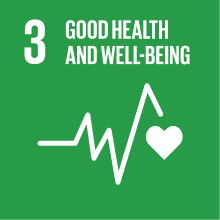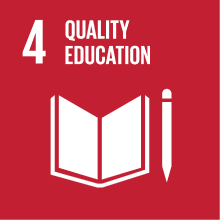TECHNOLOGY FOR TRANSLATION: APPROACHES AND TOOLS (SPANISH)
- Academic year
- 2025/2026 Syllabus of previous years
- Official course title
- TECNOLOGIE PER LA TRADUZIONE: STRUMENTI E METODI (SPAGNOLO)
- Course code
- LT5310 (AF:459015 AR:321240)
- Teaching language
- Spagnolo
- Modality
- On campus classes
- ECTS credits
- 6
- Degree level
- Bachelor's Degree Programme
- Academic Discipline
- L-LIN/07
- Period
- 1st Semester
- Course year
- 3
- Where
- TREVISO
- Moodle
- Go to Moodle page
Contribution of the course to the overall degree programme goals
Expected learning outcomes
The course "Technologies for Translation: Tools and Methods (Spanish)" aims to progressively introduce students to the practice of translation between Spanish and Italian, placing particular emphasis on aspects relating to the use of ICT in translation. Nowadays, the professional activity of translation is increasingly facilitated by the presence of IT tools. However, their use is not always taken for granted and these resources may also cause some problems if not used correctly. The expected learning outcomes are the following:
KNOWLEDGE AND UNDERSTANDING
- To know the possibilities related to the use of ICT in translation
- To know the main aspects of machine translation
- To know the main aspects of the use of corpora in translation
- To know the basic aspects of translation memories
- To know the main specialised languages from a translation perspective
- To understand texts with a certain content complexity
ABILITY TO APPLY KNOWLEDGE AND UNDERSTANDING
- To recognise the difficulties associated with the use of ICT in relation to translation
- To internalise the strategies and methodological principles of machine translation
- To carry out the pre-editing activity
- To carry out the post-editing activity
- To identify and solve translation problems between Spanish and Italian through the use of IT resources
- To know how to manage ICT in translation activities
JUDGEMENT SKILLS
- To be able to reflect on the role of ICT in relation to translation activity in the Spanish-Italian language pair.
- To be able to reflect on the role of specialised languages in translation between Spanish and Italian.
COMMUNICATIVE SKILLS
- To be able to tackle a translation project using ICT.
LEARNING SKILLS
- To be able to consult the main ICT in the field of translation in an appropriate and relevant manner
Pre-requirements
Contents
- A general framework of the theory and the techniques of translation
- IT tools applied to translation
- Machine translation
- Pre-editing e post-editing
- Corpora and translation
- Translation memories
- Specialised languages and translation
Referral texts
Compulsory texts
-Bazzocchi, Gloria and San Vicente, Félix (2021). LETI. Lengua española para traducir e interpretar. Bologna: Clueb (in particular the chapter on machine translation by María Lozano Zahonero)
- Minervini, Rosaria (2021). "La traducción automática español-italiano del turismo enogastronómico: un estudio de caso", Cuadernos de Lingüística hispánica, 42, Dossier especial, pp. 1-20.
- Sánchez Ramos, M. M. & Rico Pérez, C. (2020). Traducción Automática. Conceptos clave, procesos de evaluación y técnicas de posedición. Editorial Comares, Granada.
Assessment methods
The test will last one hour and thirty minutes.
The minimum score to be able to pass the written test is set at 18/30.
Type of exam
Grading scale
INSUFFICIENT
≤17 - Inadequate, fragmentary and deficient knowledge of content, which is not understood or is understood and reworked only partially. Inappropriate thinking skills and exposition.
SUFFICIENT
18 - Very uncertain knowledge of content, which is necessarily to be consolidated, and which is confusedly understood and reworked. Ability to reflect and expound.
19 - Confused knowledge of content, which needs to be consolidated, and which is understood and reworked in a confused manner. Sufficient reflection and exposition skills.
20 - Sufficient content knowledge, which still needs to be partially consolidated, and which is understood and reworked in a manner that is not always entirely adequate. Sufficient reflection and exposition skills.
DISCRETE
21 - More than sufficient knowledge of content, which is understood and reworked albeit with some uncertainties. Fair reflection and exposition skills.
22 - Fair knowledge of content, which is understood and reworked with some uncertainties. Fair reflection and exposition skills.
23 - More than fair knowledge of content, which is understood and reworked with some uncertainties. Fair reflection and exposition skills.
GOOD
24 - Correct knowledge of content, which is understood and reworked albeit with some uncertainty. Good reflective and expository skills.
25 - Correct knowledge of content, which is understood and reworked fairly confidently and coherently. Fair reflection and exposition skills.
26 - Complete knowledge of content, which is understood and reworked in a fairly confident and coherent manner. Fair reflection and exposition skills.
VERY GOOD
27 - Complete knowledge of content, which is understood and reworked in a confident, cohesive and coherent manner. Remarkable reflective and expository skills.
28 - Complete and thorough knowledge of content, which is understood and reworked in a confident, cohesive and coherent manner. Remarkable reflective and expository skills.
EXCELLENT
29 - Comprehensive and thorough knowledge of content, which is understood and reworked in a confident, cohesive and coherent manner with full autonomy and personal insights. Excellent reflective and expository skills, albeit with minor imperfections.
30 - Extensive and thorough knowledge of content, which is understood and reworked in a secure, cohesive and coherent manner with full autonomy and personal insights. Excellent reflective and expository skills.
30 e Lode (with high praise) - Extremely thorough and cross-cutting knowledge of content, which is understood and reworked in total autonomy and with personal contribution, with full command of specialized language and excellent ability to make interdisciplinary connections.Full capacity for reflection and exposition.
Teaching methods
Further information
2030 Agenda for Sustainable Development Goals
This subject deals with topics related to the macro-area "Human capital, health, education" and contributes to the achievement of one or more goals of U. N. Agenda for Sustainable Development


